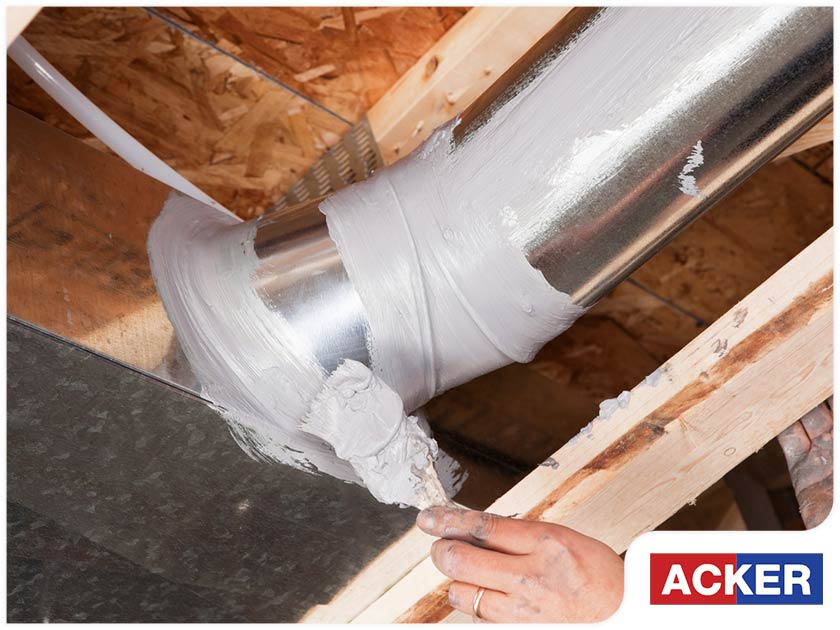Contaminants like fungal spores present a persistent challenge in indoor air quality, significantly affecting HVAC systems. Recognizing the implications of fungal proliferation and implementing preventive measures can safeguard against detrimental health impacts and infrastructure deterioration. This article elucidates the systematic approaches to avert fungal spores within HVAC systems, fostering a healthier living and working environment.
Understanding the Biology of Fungi
Fungi are ubiquitous microorganisms thriving in various environments, characterized by their capacity to reproduce via spores. These spores, when introduced into an HVAC system, can proliferate under favorable conditions, often leading to various health issues including respiratory distress, allergic reactions, and compromised immune responses. The intricate lifecycle of fungi is prompted by humidity, temperature, and organic matter, all of which can be manipulated through appropriate HVAC management.
The Role of Humidity Control in Fungal Prevention
Humidity is a pivotal factor in fungal grow dynamics. HVAC systems must maintain optimal humidity levels—ideally between 30% and 50%—to inhibit spore development.
The significance of Dehumidifiers
Utilizing dehumidifiers within the HVAC system can effectively regulate moisture levels. These devices extract excess moisture, thereby diminishing the likelihood of fungal colonization. Regular maintenance of dehumidifiers ensures efficacy and prolongs their operational lifespan. Moreover, integrating moisture sensors into the HVAC system can provide real-time monitoring, triggering automatic adjustments to humidity levels as needed.
Optimizing Airflow and Filtration Systems
Proper airflow is instrumental in mitigating the stagnation of moist air, a common catalyst for fungal proliferation. Strategies for optimizing airflow include:
Regular Duct Cleaning
Dust and debris accumulation within the ductwork serves as a nutrient source for mold spores. Implementing a stringent duct cleaning regimen is essential. Industry standards recommend professional cleaning every three to five years, or more frequently in environments predisposed to molding. Employing advanced cleaning techniques such as negative air pressure and specialized brushes can enhance efficiency.
The Importance of High-Efficiency Filters
Upgrading to high-efficiency particulate air (HEPA) filters captures even the minutest fungal spores, preventing them from recirculating into the indoor environment. Routine replacement of air filters is crucial; failing to do so can diminish system functionality and permit spores’ transference into occupied spaces. Regular inspections and maintenance of these filtration systems will also optimize performance.
Strategic HVAC System Design Considerations
The architectural layout and design of the HVAC system significantly influence its susceptibility to fungal spores. Incorporating specific design strategies can enhance system resilience:
Employing Sufficient Drainage Systems
Ensuring that condensate drain pans are correctly installed and regularly maintained can prevent water accumulation within the system. Stagnant water provides an ideal breeding ground for fungi. Periodic inspections of drainage systems to avert clogs are prudent.
Utilizing UV-C Light Technology
The application of ultraviolet (UV-C) light within air handlers serves as a deterrent against fungal spores. UV-C light disrupts the DNA structure of microorganisms, including mold spores, thus inhibiting their ability to reproduce. This method is particularly effective in high-humidity areas. Routine assessments of UV-C systems are crucial to ensure proper functioning.
Regular System Maintenance and Monitoring
Proactive maintenance serves as the backbone of preventing fungal spores in HVAC systems. Establishing a detailed maintenance schedule fosters continual system oversight and timely interventions.
The Necessity of Professional Inspections
Engaging licensed professionals for routine system inspections can unearth potential vulnerabilities. These inspections encompass checking for leaks, ensuring the efficacy of insulation, and validating the operational integrity of components. Adopting a maintenance contract with an HVAC service provider guarantees consistent oversight and timely responses to emerging issues.
Deployment of Continual Monitoring Systems
Advancements in technology facilitate the implementation of real-time HVAC monitoring systems, equipped to detect temperature fluctuations and moisture levels. Such systems can trigger alerts when set thresholds are surpassed, enabling quick remedial actions. Integrating smart thermostats also contributes to efficient energy consumption, further stabilizing temperature and humidity levels.
Education and Awareness as Fundamental Pillars
Fostering an environment of awareness among occupants is crucial in limiting fungal spores. Educational initiatives should underscore the significance of identifying early signs of mold growth and appropriate responses.
Promoting Proper Indoor Practices
Encouraging occupants to report unusual odors, water leaks, or visible mold early can facilitate immediate interventions. Additionally, occupants should be educated on the importance of maintaining personal spaces—such as ensuring proper ventilation and minimizing indoor plant moisture retention—as these practices contribute substantially to overall air quality.
Addressing External Environmental Factors
External variables, notable in urban and industrial areas, contribute considerably to indoor fungal proliferation. Identifying and mitigating these external factors can play a pivotal role in preserving HVAC integrity.
Controlling Outdoor Pollutants
Utilizing air purifiers equipped with activated carbon filters at the intake stages of outdoor air can lead to substantial reductions in particulate matter and, consequently, fungal spores. Regularly examining outdoor air quality reports and adjusting HVAC intakes during periods of elevated pollution can further support indoor air health.
Landscaping Adjustments
Strategic landscape management is indispensable. Positioning plants away from HVAC intakes, ensuring adequate soil drainage, and regularly maintaining greenery help reduce the propensity for fungal spores to infiltrate the system. Furthermore, removing organic debris from around the exterior of the building can preempt voids for spore accumulation.
The Imperative of Compliance with Regulations
Adhering to local building codes and standards pertaining to HVAC installations plays an instrumental role in long-term fungal prevention. Proactive compliance ensures systems are optimized for safety and efficacy, promoting healthier environments.
Conclusion
Preventing fungal spores within HVAC systems demands a multifaceted approach grounded in biology, technology, and community engagement. Through meticulous humidity control, effective airflow management, strategic system design, and rigorous maintenance protocols, the risks associated with fungal spores can be significantly mitigated. Recognizing the perpetual threat posed by fungi and committing to ongoing education and preventive measures establishes a robust defense against indoor air pollutants, fostering healthier living and working conditions.
